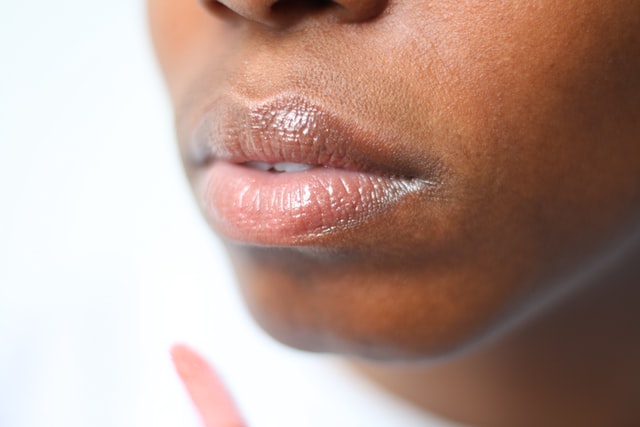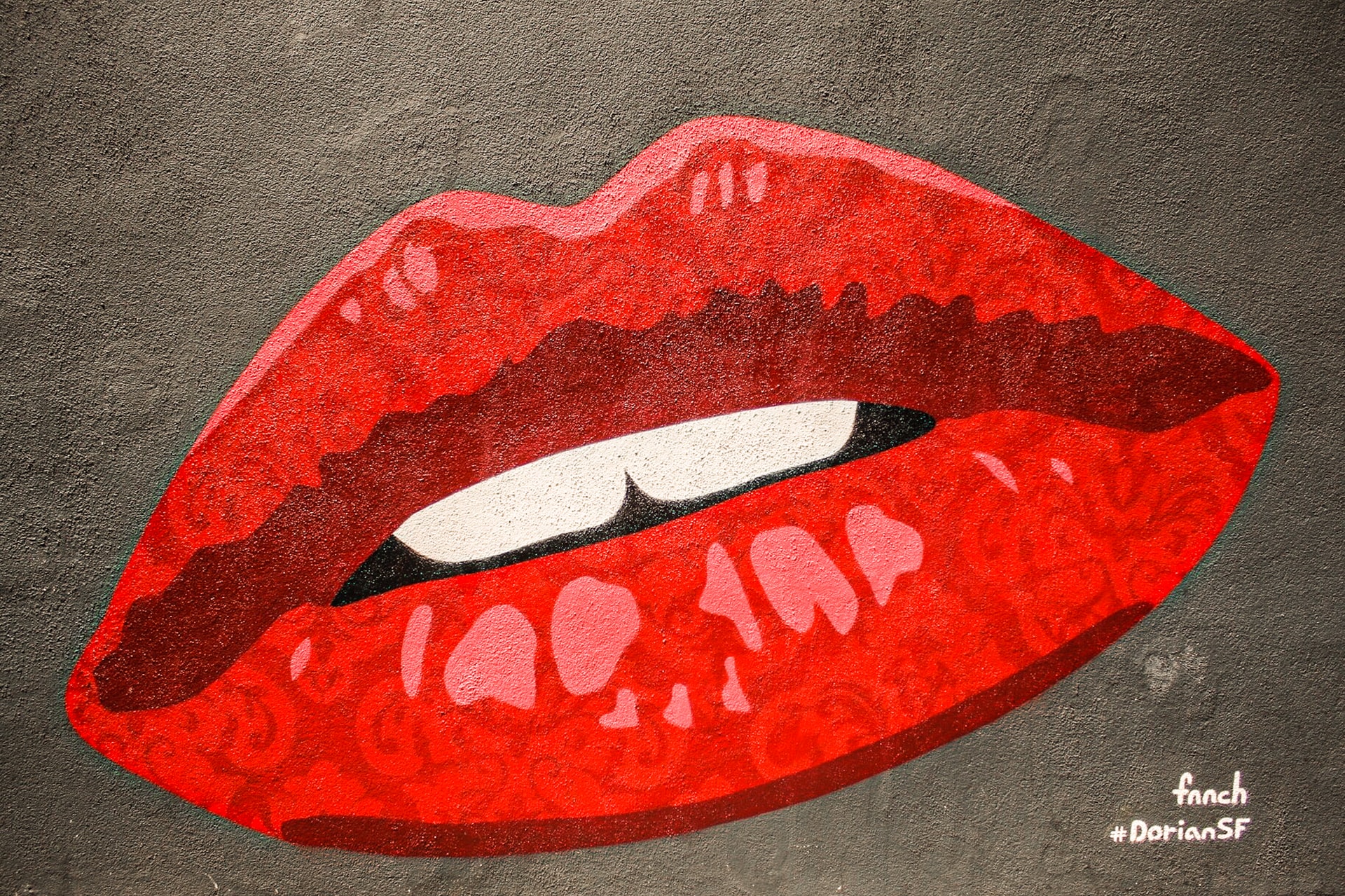In praise of our oral perimeters
There are things in life that we take for granted, even when we pay attention to them. Traffic signs. Mailboxes. Gravity. And, it occurred to me this morning as I was putting on makeup, our lips.
In the interests of decorum, I will establish that what we are talking about here are the lips we use to eat, speak, and whistle (among other things, which we’ll get to further on). This is a G-rated post.

Having said that, search for images of lips and you will be confronted with a plethora of voluptuous, pouting kissers, virtually all of which are obviously female, young, and glistening with gloss. That right there tells you a lot about the cultural associations attendant upon what are essentially curbs for our mouths.
It struck me, as I was applying my lip liner this morning, that besides all the sensual, romantic, and erotic aspects we attribute to lips, they are the facial feature that we perhaps most associate with humanity. The eyes may be the window to the soul, but lots of other animals, from camels to Bambi, have soulful eyes. And other species also have lips, especially the “higher” primates, which they use for many of the same things we do — grasping food and keeping it in our mouths, making facial expressions, communicating (lip smacking is a behavior seen in several primate species), even, arguably, kissing.
Dogs have lips too, but they’re not articulated like humans’, and they don’t allow for suction of the kind we use in sipping our cabernet sauvignon between slurps of spaghetti. Which explains why your dog leaves those disgusting puddles around the water bowl (or worse, toilet). But in humans, with our proportionally far smaller oral cavities, surrounded by lips that are permanently turned outward, our fleshy mouth borders play a big role in making us who we are.
Think of the images of space aliens you’ve seen. Not cute ones like E.T. (who kind of had lips or at least a suggestion of them), but the scary ones. The less human they are, the more alien and rapacious, the more lipless they are. And the animals we tend to feel the least cuddly about — crocodiles, spiders, T-Rex — don’t have lips either. Birds, with their beaks that range from cute to formidable, get something of a pass, especially the parrot-types, whose beaks may be pointy but are also curvy and somehow very expressive. At least they look like they’re smiling.
Consider cartoon or puppet animals. When an artist wants to give them human characteristics, especially female ones, adding nice plump lips comes second only to long eyelashes. Even Miss Piggy has some serious pout beneath her snout. Disney heroines have luscious lips, even if they live underwater. Dastardly villains twirl mustaches above mean, fleshless mouths. And we all know that a thin-lipped smile never means anything good.
Since evolution seems to have decided we humans can do without a the basic survival equipment other animals come equipped with — like fur, claws, and teeth that are good for more than chewing cooked food — why the abundance when it comes to lips?
A 2015 article in BBC Future gives an overview of the evolutionary importance of human lips. We depend on them from our first breath, as they form a crucial part of the ability to suck nourishment, a reflex that’s so basic to our survival that we’re born with it. We have that in common with most other mammals.
But the unique architecture of human lips is, to a large extent, what makes human speech possible. According to Oxford Reference, the lips are one of ten “places of articulation” necessary to the utterance of language. The lips allow us to strategically block the flow of air from our lungs so we can use our breath to form words. We put our lips together to form sounds like p, b, and m; we tuck them slightly behind our upper front teeth for f or v, and we purse them a bit to make a w sound. This explains why whistling takes practice, and why ventriloquism is hard.
So, let’s pause for a moment to appreciate our lips for their contribution to our ability to speak, eat in public, and survive infancy. What we most admire them for, however, is their sensitivity and how perfectly adapted they are to the act of osculation.
You don’t have to stop and Google it. Osculation is one of those words of questionable necessity that I like to throw around sometimes just for fun. It simply means kissing. Osculation is also a term in differential geometry, but who cares.
Kissing, from a polite peck on the cheek to a full-mouthed snog passionate enough to awaken a sleeping princess, is almost — but not quite — a universal human practice. Darwin noted that certain cultures, like the Somali or the “Esquimaux” (Eskimo — which as an identifier is not as silly as the previous spelling but has been rightfully retired when referring to indigenous peoples of the far north), didn’t kiss. In some cultures, like traditional Thai, it was seen as an abomination, something akin to cannibalism. Now that Western culture has become almost inescapable, kissing is more prevalent, even seen in public among the formerly reticent Japanese. But according to Scienceline.org, there are still some human groups that don’t do kissing, making up about 10% of the world’s population.
The geography, history, and possible biological implications of kissing is a far-reaching and fascinating topic, one which bears further exploration. But not right now, and not right here. Since our lips are the only skin on our bodies that contain no oil glands, I have to apply some lip balm ASAP or mine will get too chapped for a good smooch.
So now you know the kind of thing that runs through my mind while I’m painting my face. As for that 10% of humanity that eschews kissing? Those folks don’t know what they’re missing.
